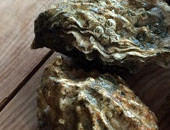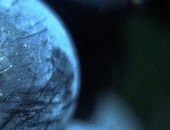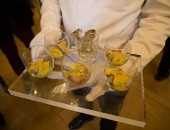Exploring the worth in a bottle by Jarrett Leplin and Michael Zimmerman
We will assume that you are serious about wine, that your palette is experienced and sophisticated (of course this is for the sake of getting somewhere, not a prerequisite). So if you are about to indulge in a bottle of, let us say, Chassagne Montrachet, many considerations present themselves. Shipping and storage, though crucial, are now beyond control. Proper aging is crucial, but assessable only with wide latitude. Youth is to some extent compensated by decanting. You might decant anyway, if concerned about sediment or the plausibility of the chemistry that says the bottle as a whole can be oxidized by exposure to air through the neck. The wine must be chilled. Half an hour in an ice bucket beats two days of refrigeration. Extraction of the cork must be cautious to ensure against crumbling or separation. The cork is then subjected to visual and olfactory evaluation. You must have a proper Montrachet glass to capture the nose, and into it pour a small sample to swirl vigorously in case oxidation is incomplete. Color is then contemplated while rotating the glass to catch the light. To determine the bouquet, one’s own nose must now descend as far as possible into the glass and perform deep inhalations. Finally, you are allowed to taste the wine, a process roughly divisible into three stages: initial contact with the tongue, the envelopment of flavor throughout the mouth as the wine flows gingerly over the palette, and absorption of the finish. The middle stage must be lingered over, with repeated sloshing and unabashedly guttural sound effects. One can only hope that the finish will be similarly protracted.
So, in our example, which, as it happens, is a 2007 Blain-Gagnard 1er cru Morgeot, we find a solid but nicely moistened cork, a promising but weak nose, fine balance all the way through an extended finish, vibrant acidity, pronounced mineral flavor with suggestions of green apple, grapefruit, and crushed granite, and robust body. This is a modest description. Typically there follows vigorous debate, in soliloquy if you want the bottle to yourself, as to the merits or flaws of the wine, with priority going to flaws. Nose, acidity, fruit, sugar, texture, tannins, and malolactic fermentation may all be covered. In company, you absolutely must come up with something to say; mere assent without a distinctive contribution raises a suspicion of obtuseness. The social dynamics of wine drive one to extremes of fanciful, figurative description (‘sexy’, ‘insouciant’, ‘pretentious’, ‘uppity’) that no one will risk displaying his naivete by protesting. Disagreements are lively and engrossing; concurrence, if emergent rather than acquiescent, is reassuring.
The exchange may rival any in art or politics for seriousness. Yet never does it come to blows. On the contrary, the entire production is eminently humanizing. Stress, tension, hostility, vexation, distress of any kind are utterly incompatible with the experience of sharing appreciation of wine. Wars might be avoided if political leaders knew enough to assemble over a promising bottle. The world would be one if everyone shared good wine. Countries that forbid wine are inherently dangerous and should be expelled from the United Nations. Wine should be mandated by international law to pacify the agitated citizenry of repressed cultures.
We have gone to an extreme to make a point. The etiquette of drinking wine is complex, elaborate, structured, ceremonial, ritualistic, and rule governed. It would border on obsession if nothing important were at stake. Important to whom? Well, to the participants and those they would influence, at least. Important according to whom, in whose estimation? The question suggests that importance depends on what people care about. But cannot importance go unrecognized? If it is common in art and science to discover greatness in what was formerly neglected, why not in wine? Either you dismiss the whole production as silly indulgence, and its socializing effect as inebriation, or you grant that there is something to be discovered, to be assessed, to be learned, something you could be wrong about, something whose value stands independent of anyone’s subjective appraisal, something that matters and warrants care and effort to get right. There are facts of the matter as to whether the wine is good or bad and in what respects and why. These are facts about the wine, not about one’s reaction to it.
More generally, some wines are good, some are bad, and within both groups some are better than others. These facts are not fixed by one’s subjective experience, nor by one’s judgment. One may judge inferior a wine one nevertheless enjoys, as one may be moved by what one recognizes to be bad literature. One may judge inferior a wine that is superior; wines are misjudged. If quality were simply a function of one’s reactions, a fact only about oneself, the ritual would make no more sense than the Latin Mass without belief in God. That is, it wouldn’t make sense intellectually. It could still be performed for ancillary purposes; it could be a game.
There is art as well as science to wine, and we should expect the calculus of aesthetics to apply to wine. Mickey Spillane may be more popular, generate more pleasure, than Shakespeare; nevertheless Shakespeare is the better writer. Rembrandt is better than Andy Warhol. Beethoven is better than the Beatles. Those who disagree, even if in the majority, are mistaken. So too, Chassagne Montrachet is better than Gallo Chardonnay even if the latter commands greater market share and more people, exposed to the alternatives, would select the latter. It is no mistake to select what you prefer, and you may prefer what you like. The mistake is to make your preference the standard of quality. If Chassagne Montrachet were half the price of Gallo, it would nevertheless be worth more. If the market were the measure of value there would be no bargains, for a bargain is precisely what the market undervalues, what the market gets wrong. With time and experience such mistakes may be corrected. The time to invest in a wine is before this happens.
So our actual behavior with respect to wine belies the notion that its value is simply a function of subjective responses. Wine is not simply described; it is evaluated. Our concern is not just how much we value the wine, what value we place on it, but how much it deserves to be valued. The question is not how valued the wine is but how valuable it is. The analysis of a wine seeks to attune its valuation to its value.
With wine as with art generally, value is a product of features or attributes that an evaluation seeks to identify. But these features must themselves be valuable if their presence is to impart value to the wine. Complexity, clarity, bouquet, fruitiness, and so forth, must be intrinsically desirable properties, properties desirable for their own sake rather than (just) for the pleasure they happen, in fact, to produce. The point is not to de-emphasize the pleasure of wine. Of course, enjoying wine is desirable for its own sake. Although the value of wine is not determined by what pleasure, if any, it in fact produces, the greatness of a wine does depend on the wine’s capacity to impart pleasure and appreciation to a palette experienced and informed in the attributes that generate quality.
Identifying these attributes is not merely a matter of neutral description. It is commendation that no purely descriptive account can establish. But commendation of its attributes is not yet commendation of the wine. The value of a wine is not a summation of its desirable attributes, because desirable attributes could be undesirable in combination. We seek harmony, concordance. The value of a wine is an emergent property not reducible to the values of its components.
If the value of wine is identifiable with individual taste, then our behavior, especially our evaluative behavior, does not make sense. This is certainly a possibility; lots of human behavior makes no sense. But we would prefer not to acquiesce in this verdict, and we needn’t if we grant that wine admits of objective standards of value. Granting this carries interesting consequences. Here we mention two that tend to be disputatious.
One is the importance of the role of the critic. As in art, music, and literature, there is, or can be, expertise in wine from which people can learn. Since individual taste is not the determinant of quality, there remain things to be learned, and the ability to appreciate wine, and to enhance one’s enjoyment of it thereby, can be improved by education. A subjective interpretation of wine’s value severely limits the legitimacy of criticism. It can still impart useful information, but it cannot improve our appreciation or understanding. If value is subjective there is no standard by which to rate one experience over another.
The other consequence is that we cannot set limits on the effort or resources that it makes sense to expend in producing or procuring wine. If wine has objective value, its worth cannot be measured in what it costs the individual. If writing his late quartets was the death of Beethoven, we cannot then say that he shouldn’t have written them. Writing them was worth it even if it was not worth it to him. And those who appreciate their value may reasonably go to extraordinary lengths, lengths that might otherwise mark them as imprudent or even demented, to attend a performance. Similarly, we cannot condemn it as unreasonable, or wrong, to pay a fortune for great wine. Even paying a fortune for a mediocre wine, though likely foolish, could, by exploiting public naivete, be defensible as a shrewd investment.
This result conforms to prevailing moral intuitions that respect the autonomy of the individual and his discretionary authority over his own resources. We avoid this result only by denying that one’s resources are ever truly one’s own, by denying that one is morally entitled to one’s possessions. Of course, there are ways to come into possessions that do not carry entitlement: fraud, possibly even luck. But unless there is no way to merit what one achieves, there is no good reason to proscribe excesses. In any event, it cannot be fair to pick on wine when we consider how many and exorbitant are the excesses of our culture, and how many such excesses indulge in things that, unlike wine, cannot plausibly be credited with intrinsic value.
We will assume that you are serious about wine, that your palette is experienced and sophisticated (of course this is for the sake of getting somewhere, not a prerequisite). So if you are about to indulge in a bottle of, let us say, Chassagne Montrachet, many considerations present themselves. Shipping and storage, though crucial, are now beyond control. Proper aging is crucial, but assessable only with wide latitude. Youth is to some extent compensated by decanting. You might decant anyway, if concerned about sediment or the plausibility of the chemistry that says the bottle as a whole can be oxidized by exposure to air through the neck. The wine must be chilled. Half an hour in an ice bucket beats two days of refrigeration. Extraction of the cork must be cautious to ensure against crumbling or separation. The cork is then subjected to visual and olfactory evaluation. You must have a proper Montrachet glass to capture the nose, and into it pour a small sample to swirl vigorously in case oxidation is incomplete. Color is then contemplated while rotating the glass to catch the light. To determine the bouquet, one’s own nose must now descend as far as possible into the glass and perform deep inhalations. Finally, you are allowed to taste the wine, a process roughly divisible into three stages: initial contact with the tongue, the envelopment of flavor throughout the mouth as the wine flows gingerly over the palette, and absorption of the finish. The middle stage must be lingered over, with repeated sloshing and unabashedly guttural sound effects. One can only hope that the finish will be similarly protracted.
.../continued...you need to upgrade your subscription if you wish to read this content.
We will assume that you are serious about wine, that your palette is experienced and sophisticated (of course this is for the sake of getting somewhere, not a prerequisite). So if you are about to indulge in a bottle of, let us say, Chassagne Montrachet, many considerations present themselves. Shipping and storage, though crucial, are now beyond control. Proper aging is crucial, but assessable only with wide latitude. Youth is to some extent compensated by decanting. You might decant anyway, if concerned about sediment or the plausibility of the chemistry that says the bottle as a whole can be oxidized by exposure to air through the neck. The wine must be chilled. Half an hour in an ice bucket beats two days of refrigeration. Extraction of the cork must be cautious to ensure against crumbling or separation. The cork is then subjected to visual and olfactory evaluation. You must have a proper Montrachet glass to capture the nose, and into it pour a small sample to swirl vigorously in case oxidation is incomplete. Color is then contemplated while rotating the glass to catch the light. To determine the bouquet, one’s own nose must now descend as far as possible into the glass and perform deep inhalations. Finally, you are allowed to taste the wine, a process roughly divisible into three stages: initial contact with the tongue, the envelopment of flavor throughout the mouth as the wine flows gingerly over the palette, and absorption of the finish. The middle stage must be lingered over, with repeated sloshing and unabashedly guttural sound effects. One can only hope that the finish will be similarly protracted.
.../continued...you need to subscribe to be able to view content from Fine Wine magazine.
Subscribe HERE to Fine Wine magazine to read the rest of this content or log yourself in if you are already a member.










